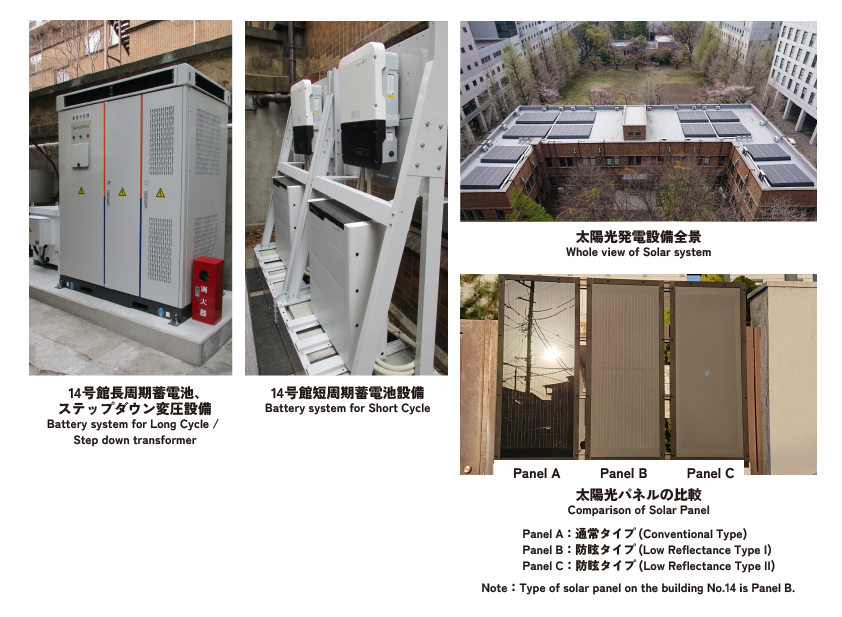Research Objectives
Short term (within 3 years): Development of hydrogen energy storage systems utilizing renewable energy
Medium term (within 6 years): Establishment and societal implementation of new energy systems capable of stable supply through monitoring, forecasting, and control of renewable energy using meteorological prediction technologies
To achieve these goals and ensure operation with actual power demand, we use Building No. 14 at the Research Center for Advanced Science and Technology (RCAST), The University of Tokyo, as a model.
We are conducting experiments and measurements on the scale of an entire building with PV panels, batteries, and hydrogen system.
By forecasting fluctuations in both power generation and demand for optimal operations, we aim at energy shifts between daytime/nighttime and summer/winter seasons, ultimately achieving a Zero Emission Building (ZEB).




System and Equipment
For building-scale experiments, we have constructed a system utilizing a Supervisory Control and Data Acquisition (SCADA) platform, enabling real-time and accurate monitoring and control.
Through this system, we can continuously monitor all relevant parameters, including photovoltaic power generation, battery charge levels, and current power demand.
In addition, two types of storage batteries with different response speeds and capacities are employed to accommodate both long-cycle and short-cycle fluctuations in power demand.
For photovoltaic panels, an anti-glare type with a matte surface is used to prevent light pollution caused by reflection.



